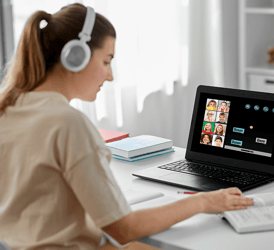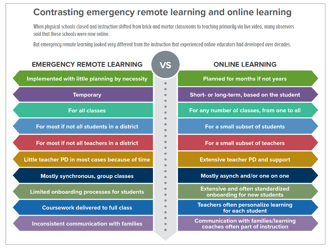Universal Design for Learning
Digital Education to Meet the Needs of All Students
It’s no wonder so many students are struggling in the traditional school setting.
According to the 2013 National Assessment of Educational Progress (NAEP), greater than 90% of students with specific learning disabilities and 61% of students without disabilities scored below proficient (National Center for Learning Disabilities, 2014). The disparate academic outcomes between students with disabilities and their peers must be addressed to ensure equal educational opportunities for all learners. StrongMind provides a top-quality education that is accessible to ALL students so each learner can thrive in school. We enable secondary schools to meet the diverse needs of their pupils with an advanced digital curriculum and classroom that support a wide range of abilities, challenges, and preferences.
With online tools, research-based content and formatting, and real-time student performance data, StrongMind empowers teachers to provide a highly effective and engaging learning experience. We take a multifaceted approach to developing our curriculum and classroom to meet the ever-evolving needs of students.
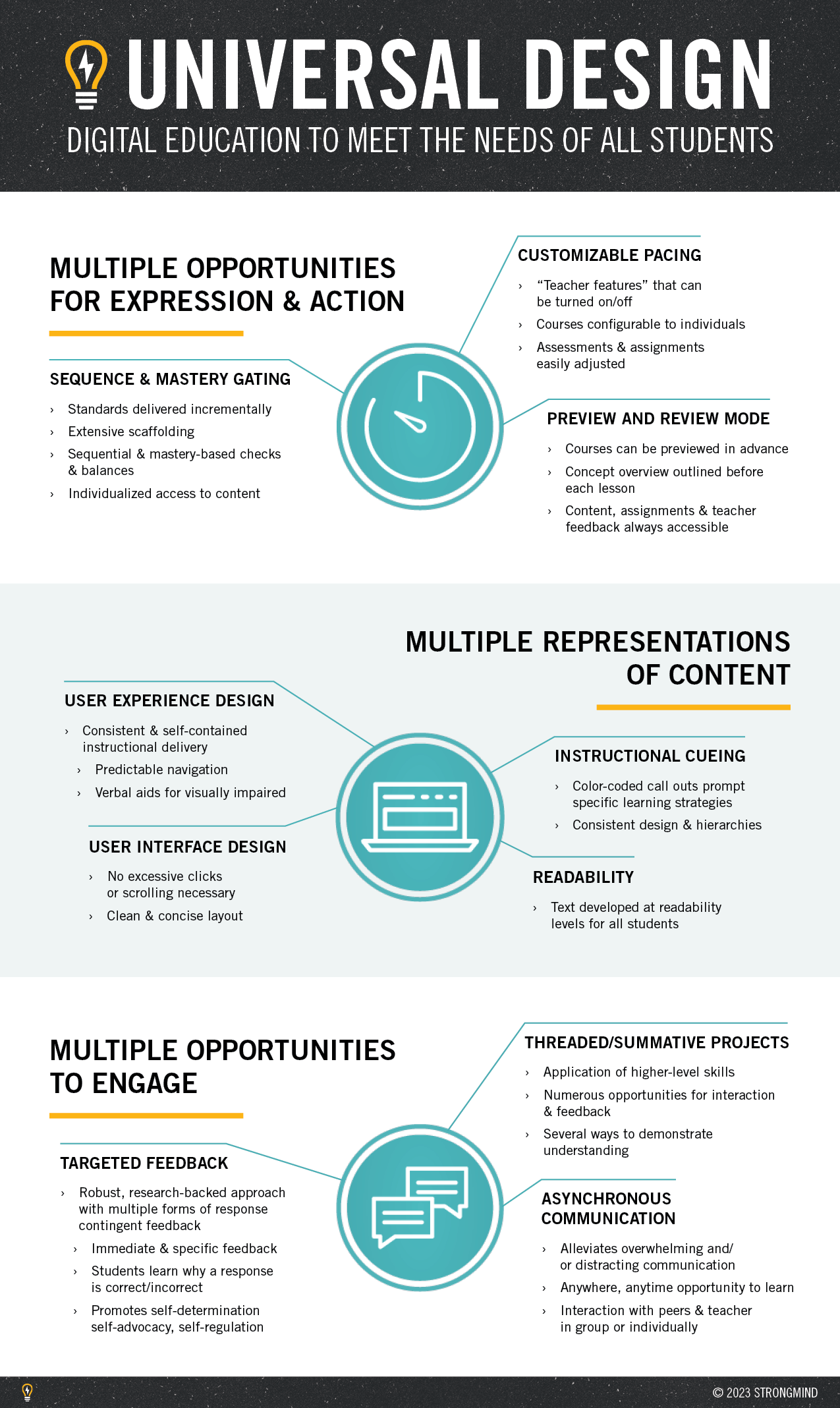




(Select the arrows to see more)
Multiple Opportunities for Expression and Action
Sequence & Mastery Gating
To support student success, it is necessary to maximize the number of scaffolds available to students. Not all students are the same, so it is imperative that instructors have the tools necessary for students to master standards without becoming overwhelmed. It is not uncommon for students with disabilities (and their parents) to feel overwhelmed by coursework (Bryan, Burstein, & Bryan, 2001).
The sequential and mastery-based checks and balances within StrongMind’s course delivery platform identifies where students need to seek help when they are struggling. Instructors can use this gating functionality to customize access to more advanced topics and ensure that they have learned prerequisite concepts. Additionally, instructors can ensure that students move on to more advanced concepts when they are ready. These features provide assistance and/or accommodations necessary to achieve student academic success.
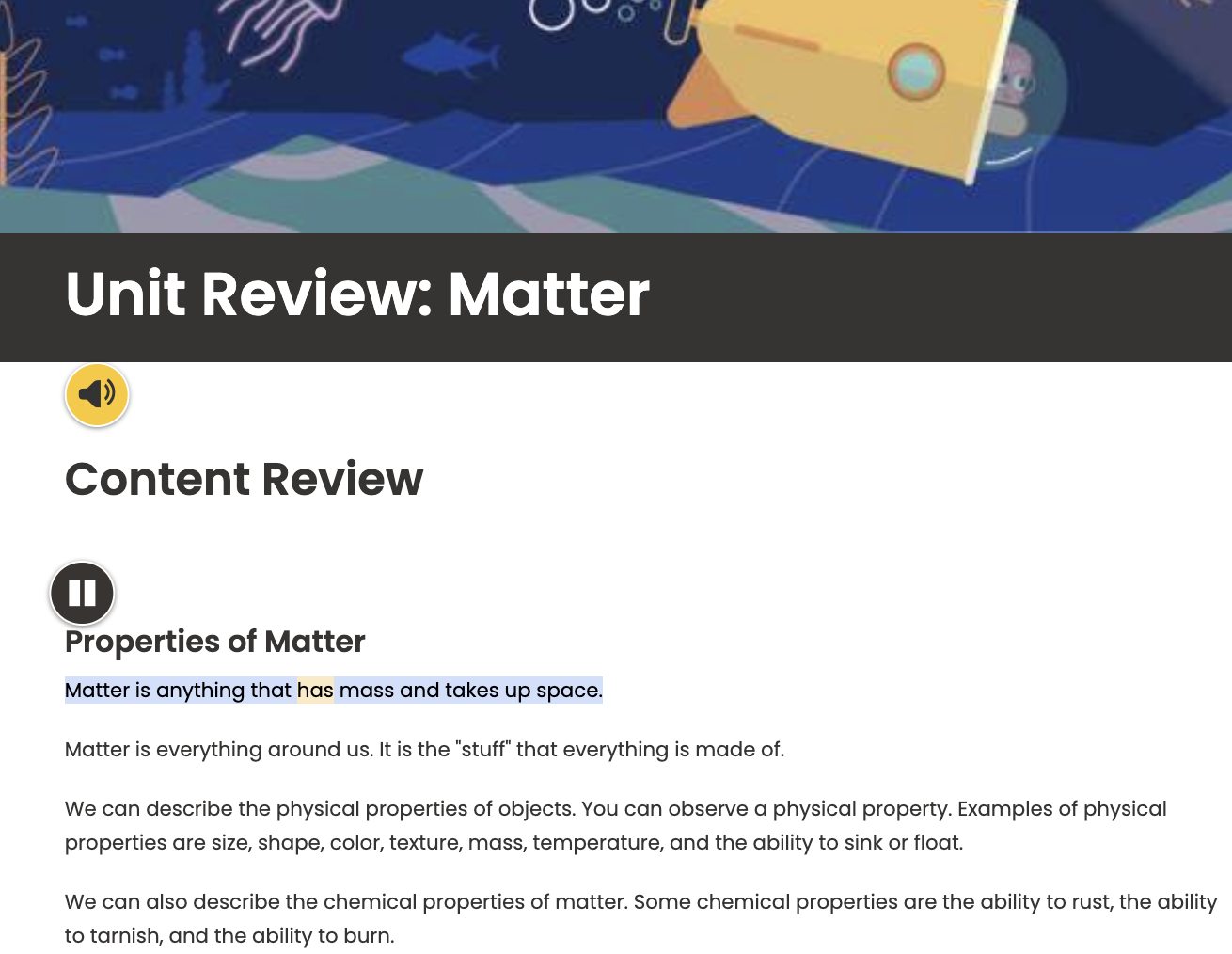
Students see unit and lesson reviews throughout a course, keeping students focused on the learning objectives.
Customizable Pacing
Unlike many traditional classroom settings, online learning makes it much easier to customize pacing to each learner’s needs. For learners needing more time than their peers, an online environment allows for a review of content even during synchronous instruction. StrongMind courses support individualized pacing by offering teachers a variety of features. Teachers can toggle these features on or off depending on the most appropriate support in the online classroom. In addition to the typical group setting, all StrongMind courses are configurable so they may be self-paced for each student.
For students who benefit from differentiated pacing of their courses, highly structured system-paced learning environments can create stressful barriers to achieving concept mastery (Keeler & Horney, 2007).
Additionally, for learners with cognitive disabilities, self-regulation deficiencies, and below-grade-level metacognitive abilities, planning, and execution in engaging with a course can result in a trial-and-error approach to learning (Getzel & Thoma, 2008).
StrongMind works to bolster students’ learning abilities with proactive approaches in our instructional design process. When these strategies do not provide enough support for students with or without learning disabilities, flexibility is a necessity. Our course delivery platform enables instructors to adjust the assessment approach to meet student needs. When necessary, instructors can offer students additional attempts and feedback on assignments which can vary in levels of difficulty. In addition, they can provide students un-timed assessments and extendable due dates when appropriate. By giving instructors control over student pacing and expectations, our learners can receive the individualized supports they require to ensure their success.
Preview & Review Mode
Students can prime their learning experience for success by reviewing the whole course in detail prior to the start date. Unlike the traditional classroom, students may be given the option to review the actual online course prior to its start date. Additionally, prior to the beginning of a StrongMind lesson, students are provided a high-level overview of their upcoming concepts. Research suggests that providing these types of overviews can increase learning outcomes by providing a content preview (Luiten, Ames, & Ackerson, 1980) and identifying the important upcoming concepts (Mautone & Mayer, 2001); this is especially true for complex or novel domain topics (Lorch, 1989)
In addition to previewing their courses, students can go back and review content, assignments, and any feedback offered by the teacher. They always have the opportunity to re-engage with past learning material, and when they choose to reference previous lessons, the clearly labeled and consistent structure of StrongMind lessons is a useful aid.
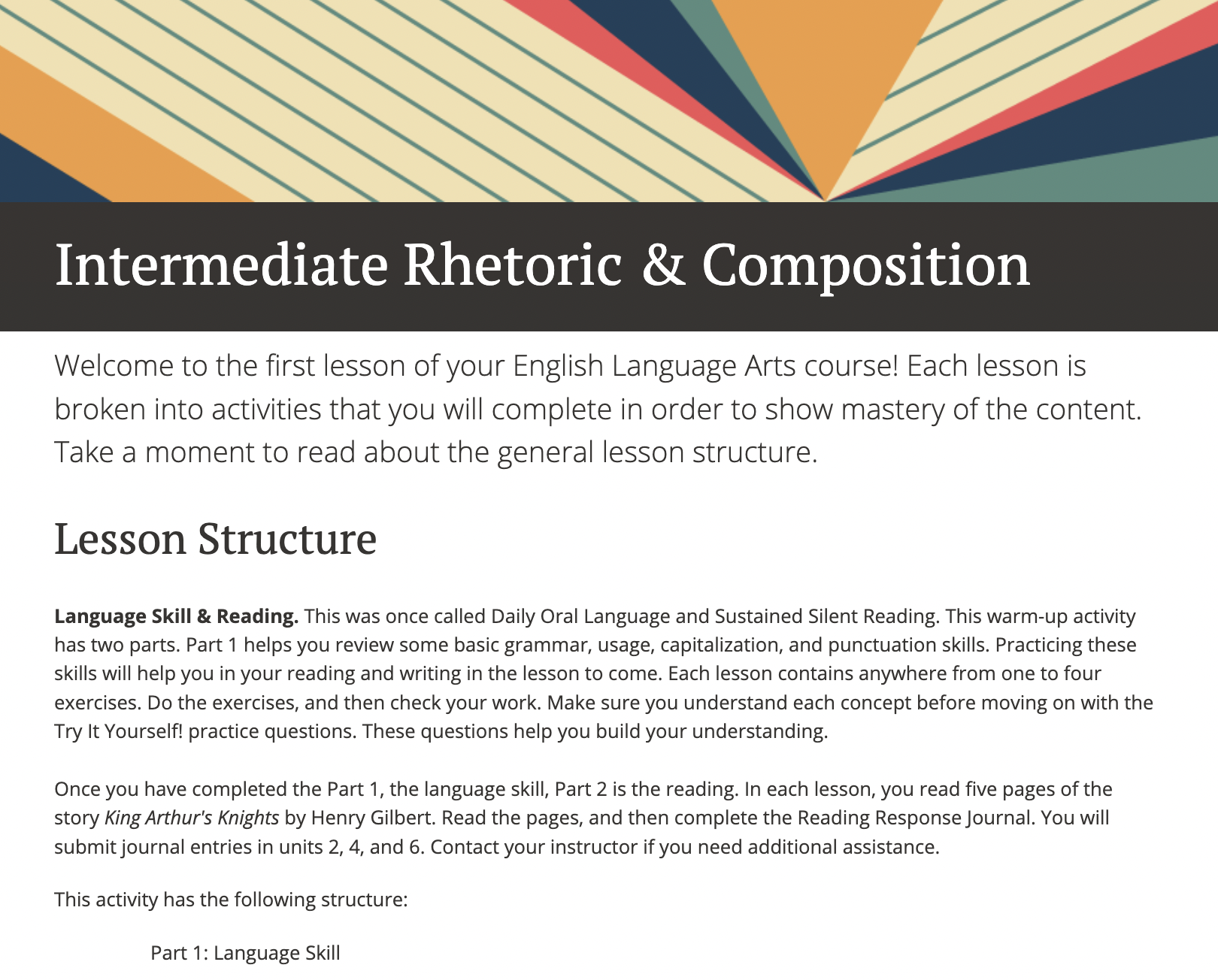
At the start of each lesson, students receive a snapshot of the core concepts that will be presented.
Multiple Representations of Content
Unlike a traditional textbook, online learning delivers the same information in various formats. This makes it easier to meet the needs of students who struggle with processing speed, semantic processing, and short-term memory.
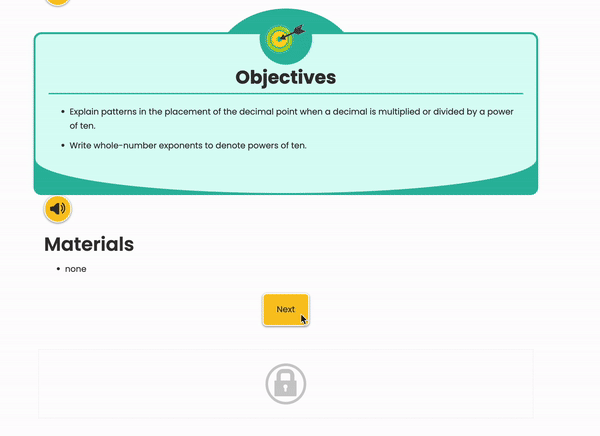
Content within courses is separated into subsections so students are not overwhelmed. Students have opportunities to practice their skills, with immediate feedback.
Readability
In a meta-analysis, Swanson, Zheng, & Jerman (2009) suggest that students with reading disabilities possess short-term and working memory deficits. These deficits do not always manifest in the same way and may extend to those students who struggle academically prior to being identified for disability support services. This is one of the reasons StrongMind analyzes the appropriateness of all instructional text by using multiple readability metrics.
For example, the intended audience of a StrongMind elective may be upper grade high school students, which requires rigorous, comprehensive assessments that are consistent with academic standards. This could be overwhelming for students with disabilities; however, Strongmind takes special care to develop instructional text at an appropriate readability level.
User Experience Design
Leading-edge web trends can change over time, and those changes can lead to significant challenges for the visually impaired. Keeler & Horney (2007) suggest web-based learning content that has pop-up windows, moving elements, and/or relies too heavily on image-based delivery can make it difficult for learners with visual impairment to engage with learning content.
Consistent and self-contained instructional delivery are the foundations of StrongMind courses. This means learners avoid unsupported external websites with potentially inaccessible content. By curating all aspects of the online instruction, StrongMind ensures students have all the necessary tools to succeed. Students with visual impairments can predictably navigate our course layout, reliably use text readers, and flexibly access verbal descriptions. The learning experience for visually impaired students in StrongMind courses is also enhanced with a variety of verbal aids: transcripts for media, alternative tags for images, and long descriptions for more complex visuals or diagrams. From the course intro video to the final exam, StrongMind embraces web accessibility standards for the visually impaired.
Videos like this — with closed captions and transcripts — help students with various disabilities and/or learning preferences.
User Interface Design
Some user interface designs can unnecessarily increase the difficulty and complexity of accessing course materials. Accessing definitions, footnotes, diagrams, maps, videos, etc. can be burdensome for learners with mobility disorders because extra clicks, scrolling, and navigational menus may be a barrier to learning (Keeler & Horney, 2007).
StrongMind courses embed supporting materials like visual aids, conceptual information, and helpful learning strategies into the course delivery platform. When students interact with their courses, they have access to all the necessary materials within a few clicks. Research suggests that providing easily accessible course materials does not force learners to retain information in working memory before they can use it, which allows students to improve their recall and transfer performance (van Merriënboer & Ayres, 2005). This approach empowers all learners to retrieve their course materials in a timely manner, and it accommodates students with mobility limitations so they can participate in their courses with minimal barriers to engagement.
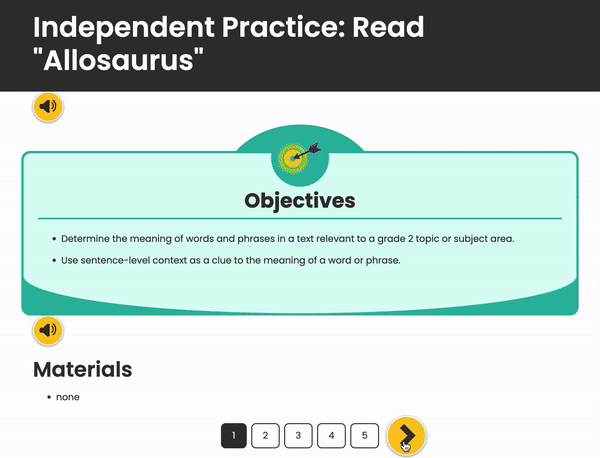
StrongMind uses a different, age-appropriate UI for K-5 uses to avoid scrolling and provide navigation designed for younger users.
Age appropriateness is also considered within the StrongMind course User Interface (UI) and User Experience (UX). Based on research, a different, age-appropriate UI is used for K-5 users to avoid scrolling and provide navigation designed for younger learners. The UX also differs with a separate rhythm for instruction, practice, application, and assessment, as well as shorter activities and assessments.
All StrongMind courses incorporate specific segmentation and cueing within the learning content to inform students when to use certain educational learning strategies. In reminding students to use these learning strategies at the appropriate times, we support them with scaffolding that helps them overcome deficiencies in their metacognitive ability. Research suggests that promoting effective self-regulation skills can enhance a student’s metacognitive ability (Azevedo & Hadwin, 2005).
StrongMind supports diverse learners with robust opt-in scaffolds for students to use if/when needed, including text-to-speech via ReadSpeaker; translation for up to 20 languages; digital dictionary look-up for unfamiliar words; transcripts and closed captions for videos; long descriptions for complex graphics; and annotations to highlight non-key vocabulary terms to support comprehension. In addition, courses have a variety of settings that allow for differentiation in how students move through content and complete formative and summative assessments.
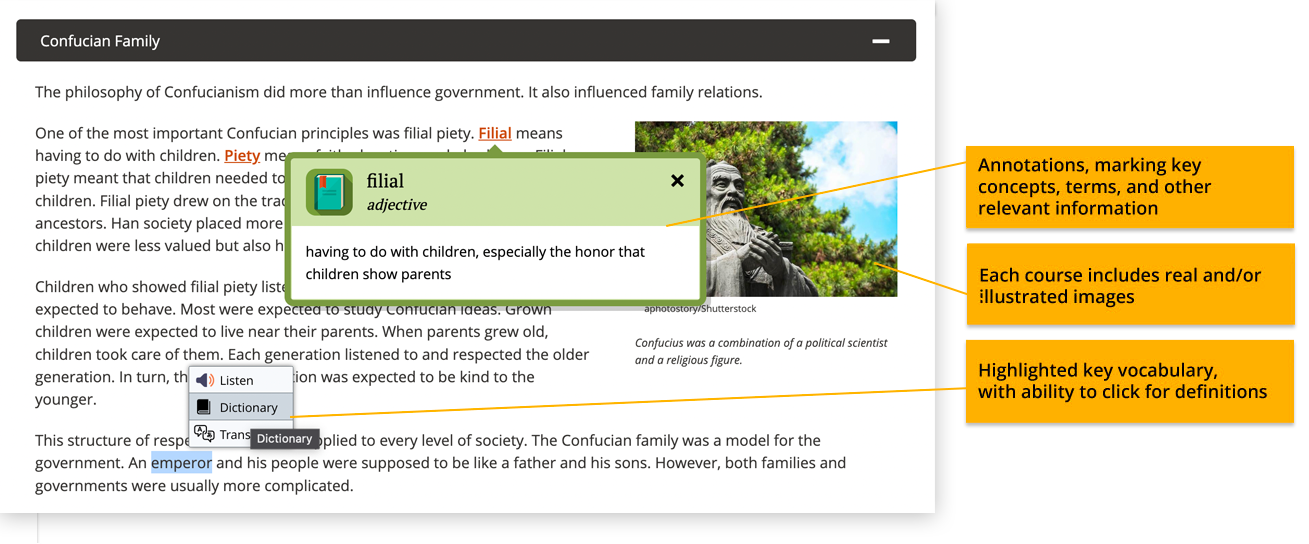
StrongMind courses embed a variety of scaffolds, such as annotations to mark important concepts, illustrated and/or real images to support learning, and a digital dictionary for word look-up.
Design for Purpose
StrongMind’s “Design for Purpose” information boxes connect a specific purpose with a color based on the psychology of color. This helps students build associations, become engaged and inspired, and absorb information more efficiently as they move through their courses.

Web pages with extraneous materials and/or crowded design elements can overwhelm students with cognitive impairments (Burgstahler, Corrigan, & McCarter, 2004). Specifically, students with memory or problem-solving deficiencies will be subject to seemingly extraordinary hurdles to achieve mastery in their courses (Bohman, 2004).
StrongMind courses use a consistent design pattern that ensures proper segmentation in both content and design layout. Additionally, designers make sure the coding behind all text promotes accessibility for students.. From the headings to the order of what a screen reader reads first, purposeful coding makes the difference for students who rely on this technology so they can do their best. Additionally, our courses offer a visual balance between blank space and learning content, which implicitly identifies the beginning and end of course concepts. This approach not only helps learners with disabilities to overcome a barrier to learning (Keeler & Horney, 2007), but it has been shown to increase learning performance overall (Mayer & Pilegard, 2014).
Multiple Opportunities to Engage
Asynchronous Communication
Because traditional classrooms are typically conducted in a synchronous format, students with limited language or processing ability may struggle to participate in class discussions, especially when there are multiple conversations happening at one time. These same issues can persist for students who are required to participate in a synchronous online course format. These minor drawbacks can become severe barriers to a quality education for students with disabilities (Cook & Gladhart, 2002).
StrongMind courses include opportunities for synchronous as well as asynchronous instruction. For most students, the added benefit of true “anywhere, at any time” education can relieve the distractibility inherent with synchronous formats. While this may be considered a bonus for most students, this can be a necessity for students with disabilities. Students can participate in conceptual conversations with peers or their teacher in the course’s online discussion boards. Students can also request assistance on an assignment from the teacher and receive that assistance through the exchange of messages or with real-time one-on-one conversation.
Courses include discussion boards with prompts that can be customized by teachers.
Regardless of disability, students can engage their peers or teacher in academically meaningful conversations they might not otherwise have in a physical classroom environment. A meta-analysis conducted by Swanson & Hoskyn (1998) suggests that this format of direct response and questioning is an effective method for assisting students with learning disabilities.
Threaded Projects
Each StrongMind course includes multiple means of engagement with the content and assessments, such as a summative project that students periodically add to throughout a unit or course. Project-based learning like this allows all students to apply higher-order learned skills in a more structured manner. Each time students encounter their project, they must demonstrate new skills; however, the familiarity of the assignment minimizes the cognitive effort needed to engage in a new assessment. By scaffolding the effort required for learning in this way, students receive feedback more often throughout the course and have more opportunities to demonstrate understanding.

Targeted feedback helps students understand why their answer is correct or incorrect.
Targeted Feedback
Research shows that students with learning disabilities who are provided response-contingent feedback can acquire, maintain, and generalize the self-determination and self-advocacy skills necessary for future academic success. Furthermore, this strategy has been demonstrated as a time-efficient instructional approach for supporting students with disabilities to become more self-regulated learners (Durlak, Rose, & Bursuck, 1994; Means, Toyama, Murphy, Bakia, & Jones, 2009). StrongMind’s approach to assessment reflects these principles. Students practice new concepts through activities designed to include dynamic feedback based on their responses.
In addition to providing comprehensive tools for teacher feedback, StrongMind courses provide multiple forms of response-contingent feedback designed to allow students the opportunity to learn why a response was correct or incorrect. StrongMind uses this robust research-backed approach (Shute, 2008) in multiple ways to help correct misconceptions and errors. By providing students with immediate and specific feedback, our courses not only lead to better learning outcomes, but they foster the development of self-regulated learning strategies necessary for all student success.
Summary
With the proper support, students with disabilities prosper. Educators can support students with disabilities by ensuring the accessibility of learning materials and the environment. Learning is accessible when every student has an equal opportunity to engage with the content, system, and technology that is used to deliver their education. StrongMind continues to research and create various strategies that enable online learning to be more inherently accessible and student-centered than traditional learning environments.
Expect More from Your K-12 Digital Courses
StrongMind is committed to making high-quality digital courses that are accessible for all K-12 students. In addition to utilizing Universal Design for Learning guidelines to inform our content and technology development, we also create courses using the Backward Design method.
Read our other blogs and papers!
Sources
Azevedo, R., & Hadwin, A. F. (2005). Scaffolding Self-regulated Learning and Metacognition – Implications for the Design of Computer-based Scaffolds. Instructional Science, 33(5–6), 367-379, doi: 10.1007/s11251-005-1272-9.
Bohman, P. (2004). Cognitive disabilities part 1: We still know too little, and we do even less. Retrieved from webaim.org/articles/cognitive/cognitive_too_little.
Bryan, T., Burstein, K., & Bryan, J. (2001). Students With Learning Disabilities: Homework Problems and Promising Practices. Educational Psychologist, 36(3), 167-–180. doi: 10.1207/S15326985EP3603_3
Burgstahler, S., Corrigan, B., & McCarter, J. (2004). Making distance learning courses accessible to students and instructors with disabilities: A case study. The Internet and Higher Education, 7(3), 233–246. doi: 10.1016/j.iheduc.2004.06.004
Cook, R. A., & Gladhart, M. A. (2002). A Survey Of Online Instructional Issues And Strategies For Postsecondary Students With Learning Disabilities. Information Technology and Disabilities Journal, 13(1), 1. Retrieved from http://easi.cc/itd/volume8/number1/gladhart.html
Durlak, C. M., Rose, E., & Bursuck, W. D. (1994). Preparing High School Students with Learning Disabilities for the Transition to Postsecondary Education. Journal of Learning Disabilities, 27(1), 51–59. doi: 10.1177/002221949402700108
Getzel, E. E., & Thoma, C. A. (2008). Experiences of College Students With Disabilities and the Importance of Self-Determination in Higher Education Settings. Career Development for Exceptional Individuals, 31(2), 77–84. doi: 10.1177/0885728808317658
Keeler, C. G., & Horney, M. (2007). Online Course Designs: Are Special Needs Being Met? American Journal of Distance Education, 21(2), 61–75. doi: 10.1080/08923640701298985
Lorch, R. F. (1989). Text-signaling devices and their effects on reading and memory processes. Educational Psychology Review. doi: 10.1007/BF01320135
Luiten, J., Ames, W., & Ackerson, G. (1980). A Meta-analysis of the Effects of Advance Organizers on Learning and Retention. American Educational Research Journal Summer, 17(2), 211218.
Mautone, P. D., & Mayer, R. E. (2001). Signaling as a cognitive guide in multimedia learning. Journal of Educational Psychology, 93(2), 377–389. doi: 10.1037/0022-0663.93.2.377
Mayer, R. E., & Pilegard, C. (2014). Principles for managing essential processing in multimedia learning: Segmenting, pre-training, and modality principles. In The Cambridge Handbook of Multimedia Learning, Second Edition. doi: 10.1017/CBO9781139547369.016
Means, B., Toyama, T., Murphy, R., Bakia, M., & Jones, K. (2009). Evidence-Based Practices in Online Learning: A Meta-Analysis and Review of Online Learning Studies. US Department of Education Washington, D.C.
National Center for Learning Disabilities. (2014). Supporting Academic Success. Retrieved from www.ncld.org/supporting-academic-success
Shute, V. J. (2008). Focus on Formative Feedback. Review of Educational Research, 78(1), 153–189. doi: 10.3102/0034654307313795
Swanson, H. L., & Hoskyn, M. (1998). Experimental Intervention Research on Students with Learning Disabilities: A Meta-Analysis of Treatment Outcomes. Review of Educational Research, 68(3), 277–321. doi: 10.3102/00346543068003277
Swanson, H. L., Xinhua Zheng, & Jerman, O. (2009). Working Memory, Short-Term Memory, and Reading Disabilities. Journal of Learning Disabilities, 42(3), 260–287. doi: 10.1177/0022219409331958
van Merriënboer, J. J. G., & Ayres, P. (2005). Research on cognitive load theory and its design implications for e-learning. Educational Technology Research and Development, 53(3), 5–13. doi: 10.1007/BF02504793

